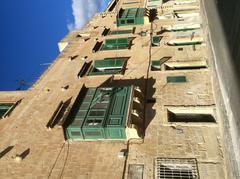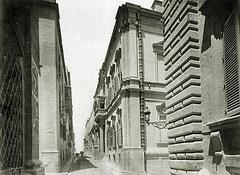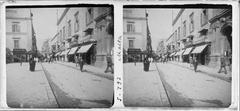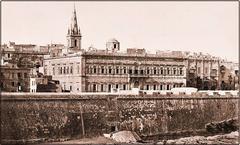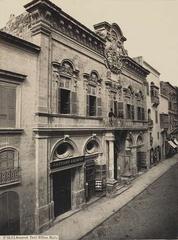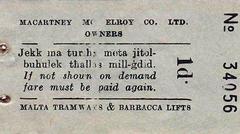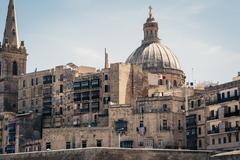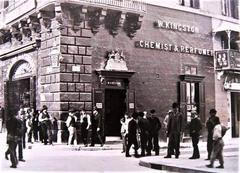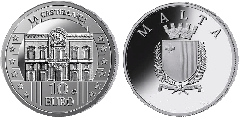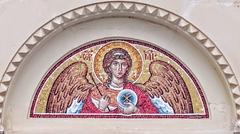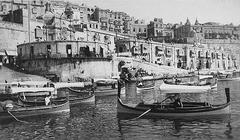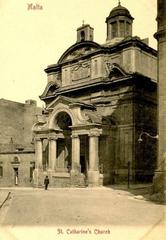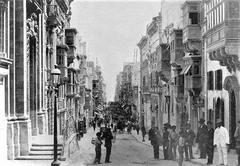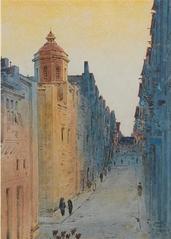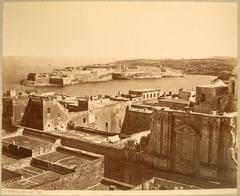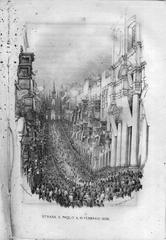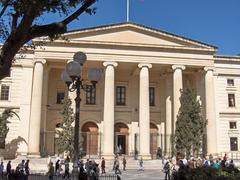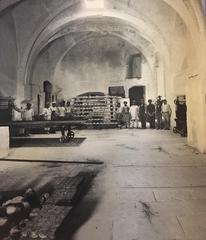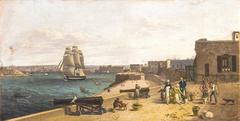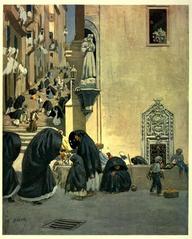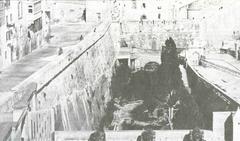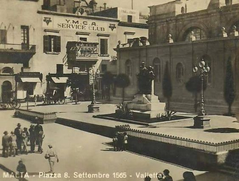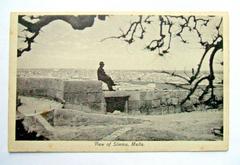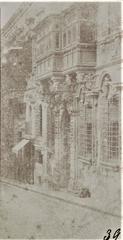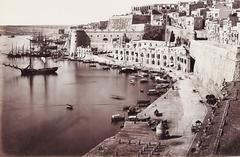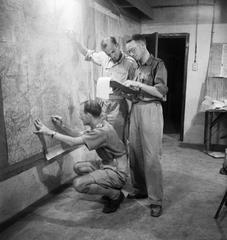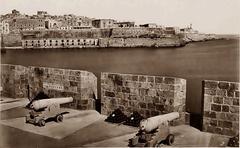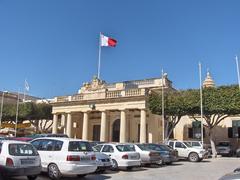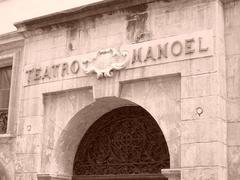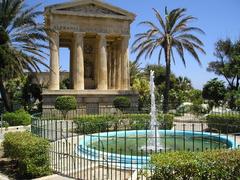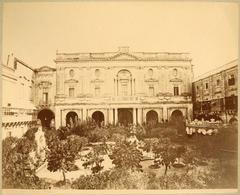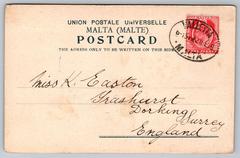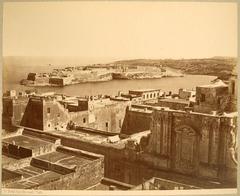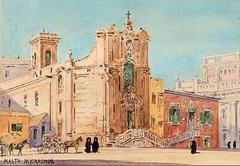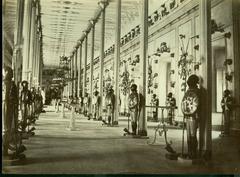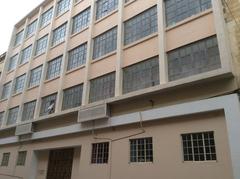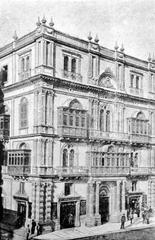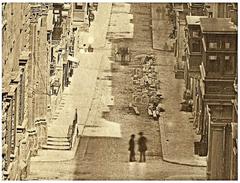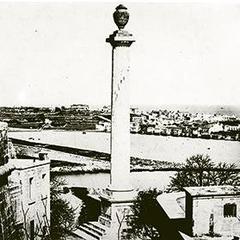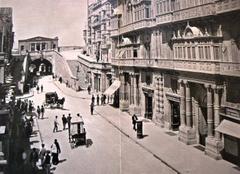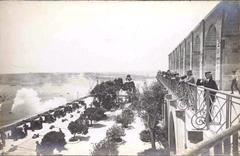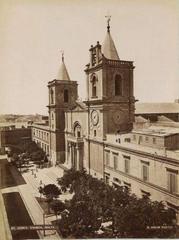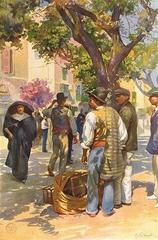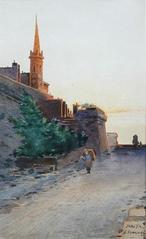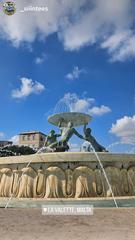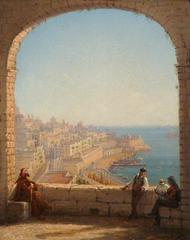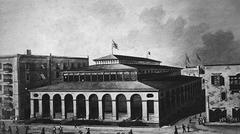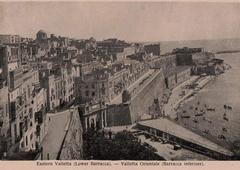
Auberge de France Valletta Malta: Visiting Hours, Tickets, and Travel Guide
Date: 14/06/2025
Introduction: The Auberge de France—A Window into Malta’s Knightly Past
Situated in the heart of Valletta, the capital of Malta, the Auberge de France stands as a symbol of the island’s rich historical and architectural heritage. Originally built in the late 16th century for the French knights of the Order of Saint John, this site offers a fascinating look at Malta’s pivotal role during the era of the Knights Hospitaller. Although the original Valletta auberge was destroyed during World War II, its story endures through surviving architectural features, commemorative plaques, and related structures such as the Auberge de Provence and Auberge de Castille, which continue to reflect the Order’s profound influence on Maltese culture and urban development (The Independent; Lovin Malta; The Crazy Tourist).
This guide provides essential information on visiting hours, ticketing, accessibility, historical background, and practical visitor tips—helping you make the most of your journey through Valletta’s storied past.
Table of Contents
- Historical Background: The Auberge de France and Its Significance
- Architectural Features and Evolution
- Destruction and Legacy
- Visiting the Auberge de France in Valletta: Practical Information
- Nearby Sites and Guided Tours
- Frequently Asked Questions (FAQ)
- Visitor Tips and Accessibility
- Visuals and Further Resources
- Summary and Final Tips
- References
Historical Background: The Auberge de France and Its Significance
Origins and Early Construction
The Auberge de France traces its origins to 1530, when the Order of Saint John settled in Malta. The French knights, or Langue of France, were initially accommodated in Birgu (Vittoriosa), where the first Auberge de France, designed by Bartolomeo Genga, was built in 1533 and still stands today (The Independent). After the Great Siege of 1565, the knights moved their capital to Valletta, prompting the construction of a new auberge in the city’s core, attributed to the prominent architect Girolamo Cassar.
Role During the Knights’ Period
The Auberge de France in Valletta became the headquarters and residence for the French knights, central to their military, religious, social, and administrative activities. It also briefly hosted the German Langue and the Order’s mint, further underscoring its importance.
Architectural Features and Evolution
Valletta’s Auberge
The first Auberge de France in Valletta, completed in the 1570s, displayed Mannerist architecture—characterized by symmetry, restrained ornamentation, and unique flagpole supports. As the French contingent grew, a larger second auberge was constructed (1580s) at the corner of South Street and Old Bakery Street, incorporating nearby residences (Lovin Malta). The façade featured classic Maltese limestone, decorative stonework, and the French fleur-de-lys.
Surviving Example in Birgu
The original Auberge de France in Birgu has survived centuries of change and is now recognized as a Grade 1 National Monument. While it is privately owned and not generally open to the public, its façade can be admired from the street (Lovin Malta).
Destruction and Legacy
The Valletta Auberge de France suffered extensive damage during World War II and was ultimately demolished in 1942. Today, the site is occupied by the General Workers’ Union building. Only commemorative plaques and historical references mark the location, but the auberge’s legacy persists in Valletta’s urban memory and in the surviving auberges that continue to embody the spirit of the Order (The Independent).
Visiting the Auberge de France in Valletta: Practical Information
Location
- Address: Republic Street, Valletta, Malta (site now occupied by the General Workers’ Union building)
Visiting Hours
- The site is in a public area and accessible 24/7, with no restricted visiting hours.
Tickets and Admission
- There is no entrance fee or ticket required to visit the Auberge de France site. Visitors can view commemorative plaques and interpretive signage at any time.
Accessibility
- The area is pedestrian-friendly, but some streets may have uneven paving. Wheelchair users may need assistance in certain areas, though nearby amenities are generally accessible.
Nearby Sites and Guided Tours
Nearby Auberges and Historical Sites
- Auberge de Castille: Now the Prime Minister’s office; open Monday to Friday, 9:00 AM to 4:00 PM, with guided tours available by appointment.
- Auberge de Provence: Houses the National Museum of Archaeology; open Tuesday to Sunday, 9:00 AM to 5:00 PM, with an entrance fee (Tour de Malte).
- St. John’s Co-Cathedral: Renowned for its Baroque artistry and Caravaggio masterpieces.
- Upper Barrakka Gardens: Offers panoramic views of Valletta’s Grand Harbour.
Guided Tours
- Numerous local operators offer walking tours that include the Auberge de France site along with other Valletta landmarks. These tours provide rich historical context and are recommended for visitors seeking deeper insights (GPSmyCity).
Frequently Asked Questions (FAQ)
Q: Can I visit the original Auberge de France building in Valletta?
A: The original auberge was destroyed during WWII; only commemorative plaques remain on site.
Q: Is there an entry fee or ticket required?
A: No, visiting the site is free.
Q: Are there guided tours specifically for the Auberge de France?
A: No dedicated tours, but many Valletta walking tours include the site.
Q: Is the Birgu (Vittoriosa) Auberge de France open to the public?
A: It is private property, not generally open for tours, but its façade is visible from the street.
Q: What are the best nearby sites to combine with a visit?
A: Auberge de Provence (National Museum of Archaeology), Auberge de Castille, St. John’s Co-Cathedral, and Upper Barrakka Gardens.
Visitor Tips and Accessibility
- Best Time to Visit: Spring and autumn for mild weather and fewer crowds (The Travel Bunny).
- Photography: Allowed at the site; nearby squares and historic buildings offer excellent photo opportunities.
- Accessibility: Republic Street and the surrounding area are generally accessible, but assistance may be needed for cobblestone streets.
- Amenities: Numerous cafes, restaurants, and public restrooms are available nearby.
- Guided Tours: Enhance your visit by booking a city walking tour focused on Valletta’s architectural heritage.
Visuals and Further Resources
Suggested Images:
- Façade of the surviving Auberge de France in Birgu (Alt: “Auberge de France in Birgu façade showcasing 16th-century architecture”)
- Auberge de Castille (Alt: “Grand façade of Auberge de Castille, Valletta”)
- Map of Valletta highlighting the original Auberge de France site and other surviving auberges
Explore Interactive Maps and Virtual Tours:
Summary and Final Tips
Although the original Auberge de France in Valletta no longer exists, its legacy endures through commemorative sites, related auberges, and the broader architectural heritage of Valletta. By visiting the site, the preserved auberge in Birgu, and the nearby Auberge de Provence and Auberge de Castille, travelers can connect with the history of the Knights Hospitaller and Malta’s enduring cultural identity. Take advantage of guided tours, accessible facilities, and the rich network of historical sites to fully immerse yourself in Valletta’s fascinating past.
For an enriched experience, download the Audiala app for expert audio guides, maps, and up-to-date travel tips. Stay tuned to official Malta tourism resources for the latest updates on opening hours and events.
References
- The Independent, 2007, The Auberges of France in Birgu
- Lovin Malta, 2020, Take a Look at Malta’s Most Lustrous and Lesser-Known Auberges
- The Crazy Tourist, 2023, 15 Best Places to Visit in Malta
- Vassallo History, Maltese Architects
- Tour de Malte, Malta’s Prehistoric Heritage and National Museum of Archaeology
- GPSmyCity, Valletta Architectural Landmarks Tour
- Obon Paris, Best Places to Visit in Valletta
